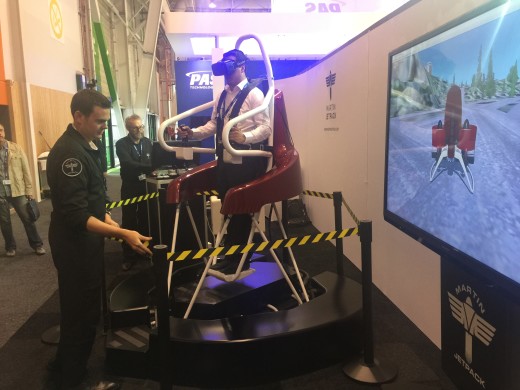According to an announcement made by Martin Aircraft, it will start selling its manned jetpack for about $150,000 in the second half of 2016. The Martin Jetpack is made from carbon fibre and aluminium. It abstains from using the traditional rockets of science-fiction jetpacks, which are powerful but very hard to control, and uses fans as an alternative. https://youtu.be/i8gncCih7Js Martin says its jetpack, which has been developed over the past 35 years, is powered by a 200HP V4 petrol engine that drives two ducted fans for up to 30 minutes of flight time at speeds as fast as 74 kilometers per hour. It can carry a payload of up to 265 pounds and reach a top speed of 45 MPH. Pilots will be able to attain altitudes of 1,000m while taking off and landing vertically, which would mean that gardens, rooftops, and parking lots all could be used as feasible options for launchpads. In fact, Martin believes that it’s selling point of the jetpack would be it’s ability to land in confined spaces, not targeted at millionaires as an expensive toy, but for emergency services. At an airshow in Paris, the New Zealand-based company showed off its latest prototype using a simulator equipped with an Oculus Rift VR headset to allow visitors to have a feel of the product without moving it off the ground. Initially, Martin Aircraft had planned to commercially launch its jetpack at a starting price of $100,000 in 2014. The jetpack may look like a neat toy for those who can afford it, while Martin’s chief executive Peter Coker says it’s targeted at emergency responders and government agencies as well as police, fire and ambulance services. Coker told Reuters: Recently, the Martin Aircraft was seen floating on the Australian stock exchange, which saw an $50m investment from Kuang-Chi Science, a Chinese aerospace company valuing Martin at $100m. It has started taking orders earlier this year, and has been exhibiting a simulator of the jetpack at airshows including Paris. “Naturally for the ambulance service getting to a point of importance of rescuing people in the shortest possible time. So there’s a lot of uses within that first responder environment.”
